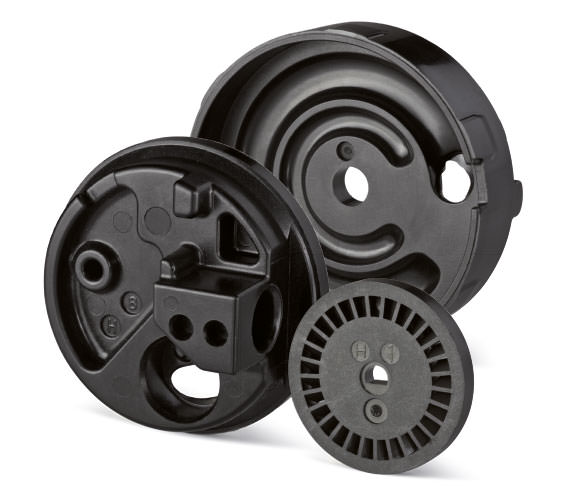How Bakelite® Molding Compounds meet the needs of demanding applications
Bakelite® molding compounds are engineering thermosets (ETS) not engineering thermoplastics (ETP). Once processed and cured, they are infusible and cannot be re-melted or dissolved. This is the key to their strength, toughness and durability.
Bakelite® molding compounds are formulated from one of four heat-cured, crosslinkable resin systems, which are combined with reinforcements, fillers and modifiers, to produce materials that meet or exceed a wide range of end use application requirements. The original and still predominant resin system used is phenolic: the other three are: melamine-phenolic, epoxy and unsaturated polyester.
Types of Bakelite® Molding Compounds Available
There are different types of Bakelite® molding compounds available, opening up awide field of varied applications for diverse demands.
General purpose and specialty molding compounds
- Organic or mineral fillers
- Graphite-extended for tribological performance
- Specialty grade capable of being galvanically chrome-plated
- Modified grades with enhanced dimensional stability and flame resistance
Glass-fiber reinforced molding compounds
- High modulus, low creep
- Mechanical strength at elevated temperatures
- Resistant to automotive fluids
- Dimensionally stable, capable of complex high precision tight tolerance parts

Advantages of Bakelite® Molding Comounds
There are a number of advantages that separate Bakelite® molding compounds from comparable materials. Depending on material type and application, these properties can even be amplified. General advantageous properties are:
- High strength, rigidity and surface hardness
- Exceptional dimensional stability
- Low coefficient of thermal expansion
- Good thermomechanical properties, virtually no cold flow (low creep)
- High dynamic stress resistance (high fatigue stress)
- High resistance to media, no environmental stress cracking
- High thermal resistance, tolerant of temperature spikes in end use environment
- Inherently flame retardant: incandescent wire resistance of 960 °C,
special grades full fill UL 94 V-0 in thin walls - Good thermal and electrical insulating properties
- Improved NVH (damping) vs aluminum
- Tribological grades resistant to abrasion and wear

